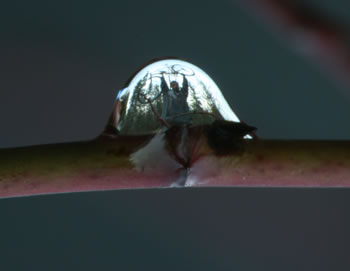Cycle Touring – Tires
It’s important to choose the right tires for touring. A couple of the best quality are Continental Top Touring 2000 and Schwalbe’s Marathon Trekking Tires. These are made for both 700c and 26 inch wheels. Do not use knobby treads, as the increased friction will substantially reduce speed. While skinnier tires reduce weight and friction, larger tires offer more cushioning. It is important to keep this in mind if your bicycle will be bearing heavy loads or if the roads are rough. 26-inch wheels are capable of running fatter tires. Potentially, fatter tires can be faster if it reduces time spent repairing broken spokes and rims.
Lower-end tires will last about 2000 km, and some of the higher quality, with thick tread, will last over 5000 km. It’s better to change your tires on the early side to reduce punctures, which increase in frequency as the tread thins.
Tubeless tires are used for racing and other applications, but are not recommended for touring. They are more difficult to repair, and are prone to other problems.
Flat tires are the bane of the long-distance cyclist, and there is no fool-proof solution. Worn tires puncture more frequently due to the thinning tread. Long strips of Kevlar can be purchased and placed between the tire and the inner tube.
On our own travels the leading cause of tire punctures was short bits of radial wire, detritus from vehicular tire blowouts. This was followed by thorns and then glass. A handful were caused by nails or screws, and one was caused by a sharp rock.
Inner Tubes
Any of the standard brands of inner tubes are satisfactory. Self-repairing tubes are available, but are not recommended. These tubes contain a fluid similar to liquid paper. In theory, when the tube is punctured the gunk squirts through the hole, plugging it in the process. When this self-healing process doesn’t work (which is frequent) the tube cannot be repaired with a conventional patch due to the oozing liquids and non-stick film.
Valve Types
Schrader: These are the standard valves which used to be ubiquitous on all bicycles, and are identical to the valves in automobile tires. The advantages of Schrader valves are they are very robust and can be inflated by the pumps in service stations. Schrader valves are fractionally (inconsequentially) heavier, and are slightly more difficult to deflate than presto valves
Presta: These have appeared more recently on the bicycling scene and are used commonly on road bikes and high-end mountain bikes. The main advantage of presta valves is they are narrower diameter, so a smaller hole can be drilled through the rim. For narrow-rimmed road bicycles this reduces loss of strength at the valve-exit point. For wider rims, this issue is irrelevant.
There are two main drawbacks to Presta valves. They cannot be filled at service stations without an adapter, and they are not as robust. On our cycling travels we used both Schrader and Presta valves and had significantly more valve failures with Presta.

